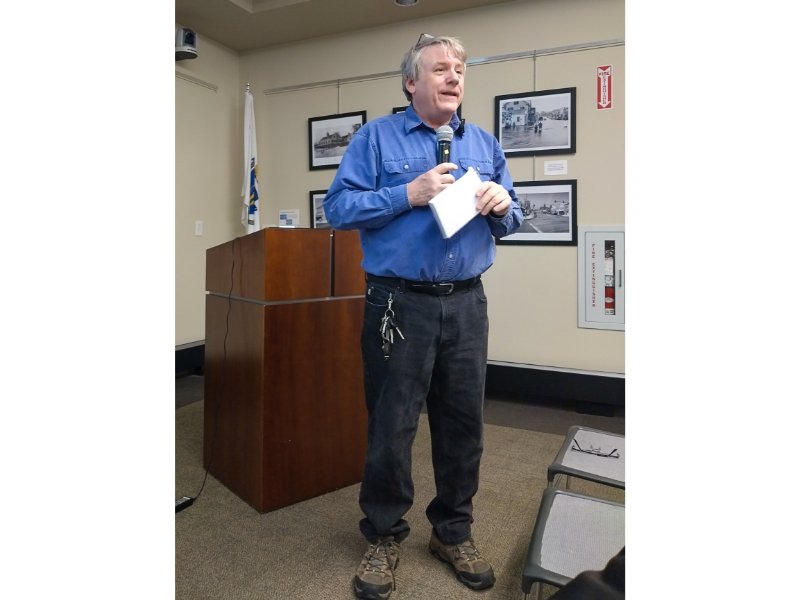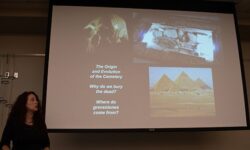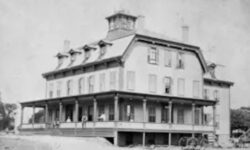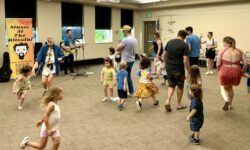By Audrey Anderson
Hometown Weekly Reporter
You may have had the chance to stop by the Walpole Library in the past month to view the lauded and informative exhibition, “Walpole Then and Now.” The exhibition features 26 historical photographs selected from the Walpole Historical Society’s collection. New, present-day photographs of the same places hang aside the historical ones.
Lifelong Walpole resident and former Walpole teacher, James D’Attilio, presented the results of research by Historical Society members into the history of the sites depicted in the exhibit. Attendees added their own memories and details of places and events lost to time. The following paragraphs share some of the details.
--The original Town House (later called Town Hall) was built in 1881, on Clapp family land. The 70-foot clock tower originally included a bell, which was subsequently lost. In the basement of the Town House were the offices of the constables, jail cells, and a small collection of fire-fighting equipment.
A meeting hall was located upstairs. In this hall, town meetings, dances, graduations, basketball games, and temperance meetings took place at various times. A criminal court was held in the hall two days per week and a civil court was held there three days per week. The Footlighters also performed there.
The Town Hall building was remodeled in 1931 to enlarge the police department. In the 1950s, the upstairs hall was divided into offices and hung ceilings were added. In 1980, the building was renovated to become the town’s police station.
--Hose No, 1, also called Center Station, was built in 1901 for the fire department. Horse-drawn fire equipment was originally used there. The building was used until the town sold the it in 1952, and it was moved to another location. Later, the same building became the Knights of Columbus building.
--The Blackburn Memorial Building was built with $50K that Harriet Blackburn left to the town for a building in memory of her parents. The handsome building was the scene of many dances, concerts, church services, recreation department offices, and blood drives.
Over the years, the building underwent several renovations, mostly for the purpose of aligning to fire code changes. The crumbling four tall chimneys were removed when the roof needed to be updated, since it would be less expensive to rebuild the roof without them.
--The early Catholic townspeople celebrated mass in member’s homes until St. Francis Church was built where Blessed Sacrament is now. In 1873, mass could be celebrated in the basement. In 1879, the church was finished. Fr. Gouesse was often seen sitting under the maple tree at the rectory. He liked the spot so much that he asked to be buried there.
In 1913, the St. Francis church building was moved behind the rectory, so the present Blessed Sacrament church building could be built. Legend has it that Fr. Gouesse’s grave was incorporated into the basement of the new building. D’Attilio said that in his earlier years, he did observe a tree stump in the basement.
























